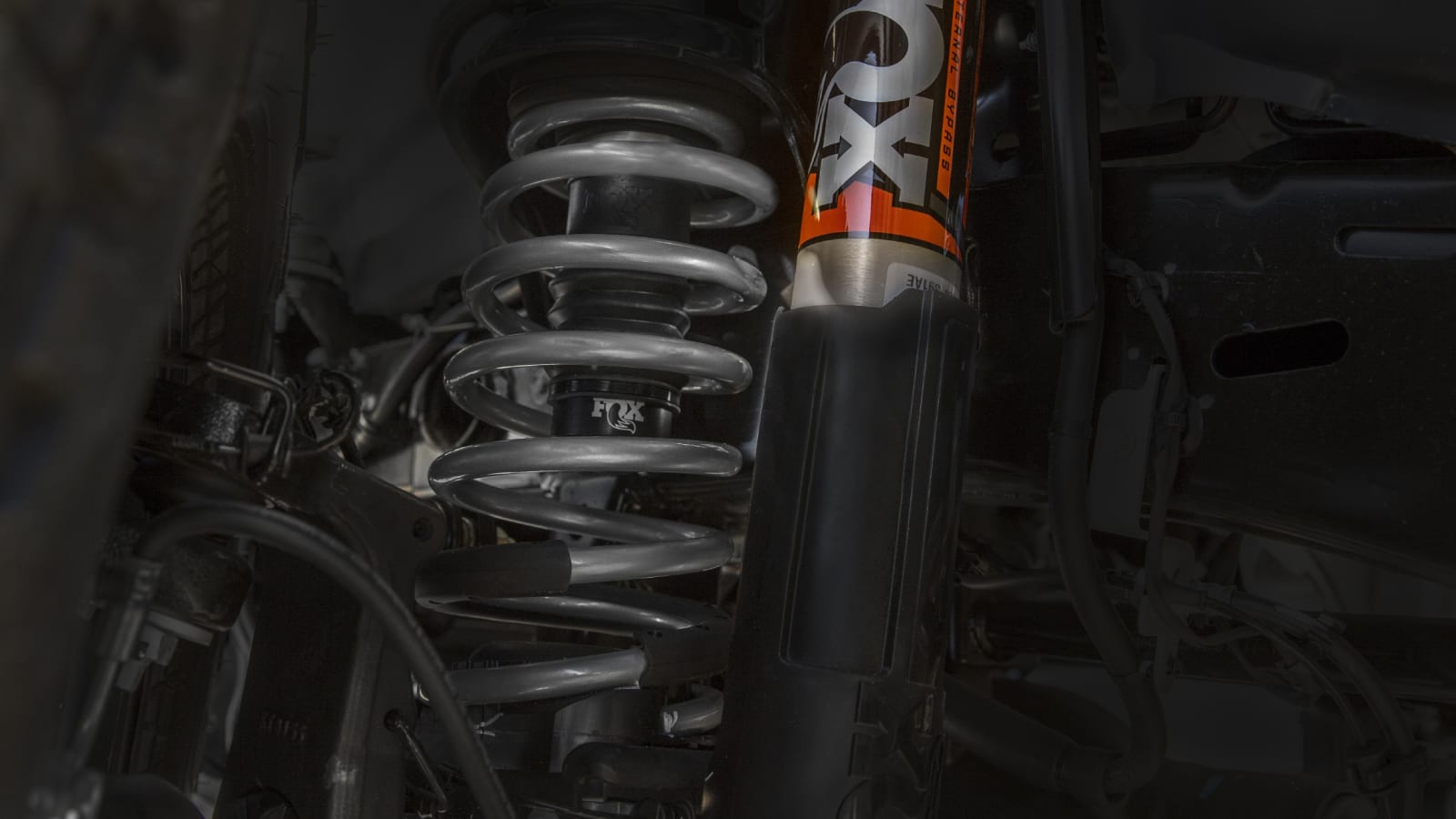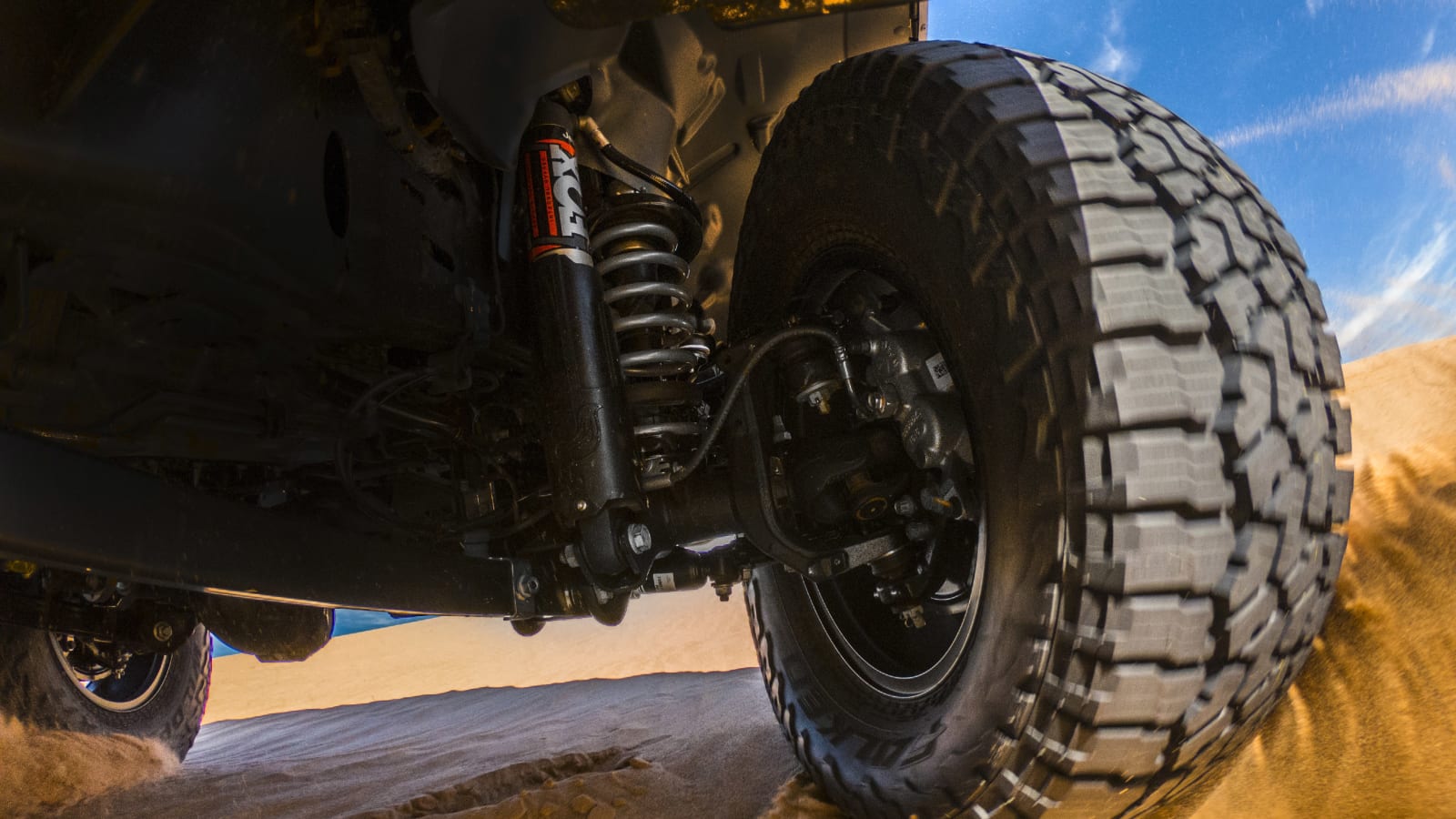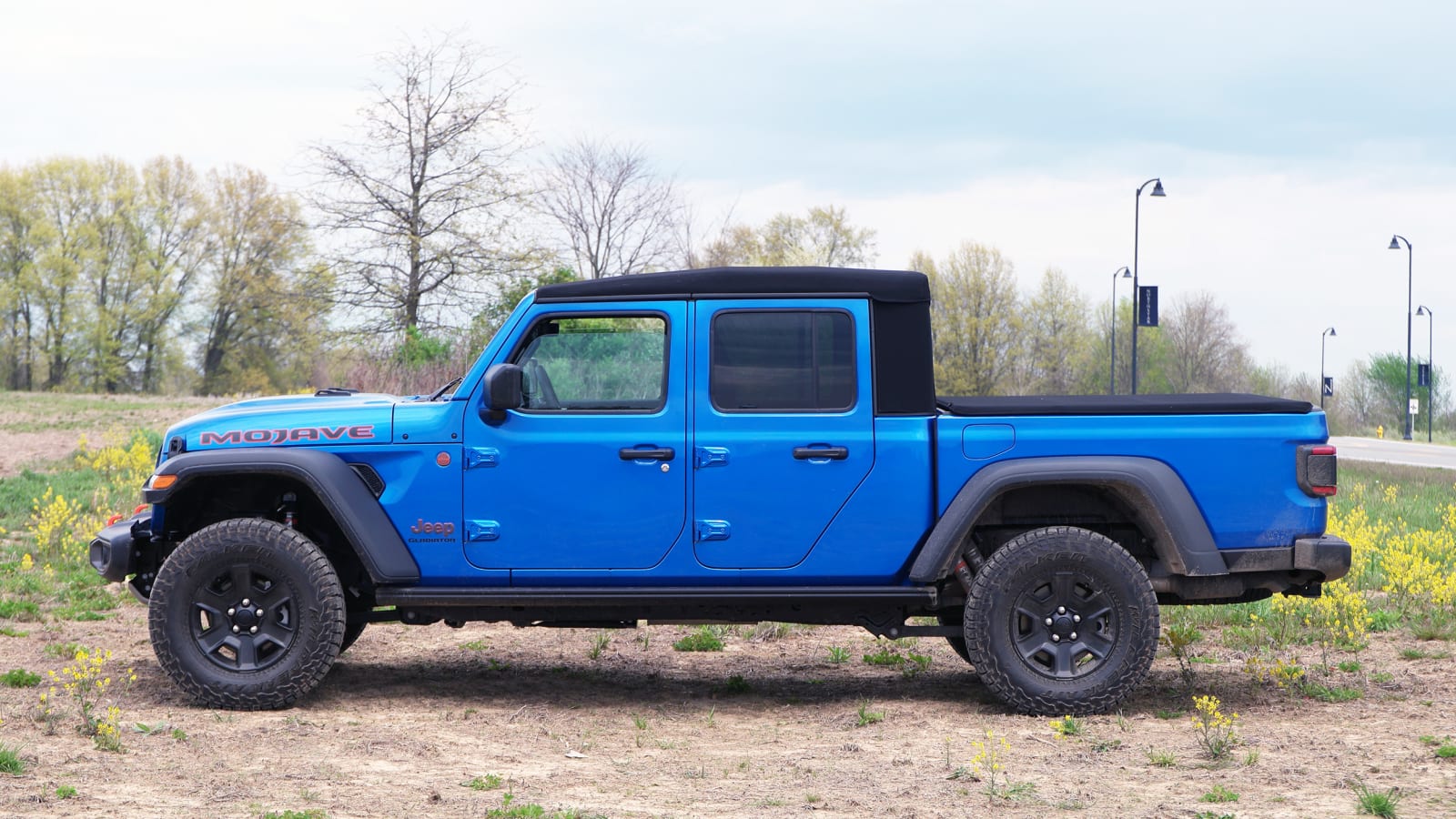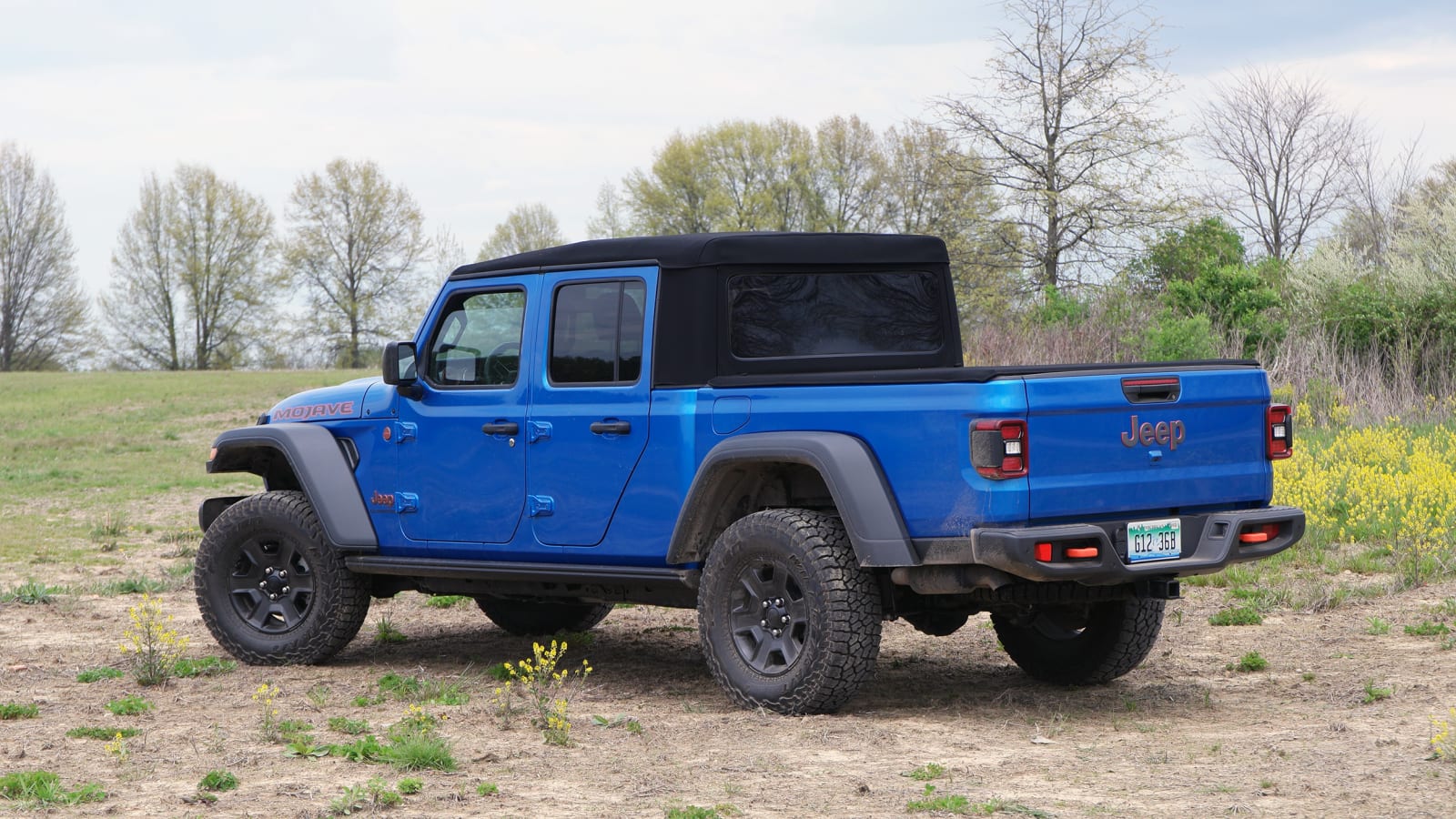Unless your house is at the end of a really long, rutted and rock-strewn dirt driveway, you don’t need a 2020 Jeep Gladiator Mojave. And you probably shouldn’t buy one, either. It’s awfully expensive, gets dreadful fuel mileage, and isn’t all that comfortable in the city or on highways where it’ll inevitably accrue the majority of its miles. Still, the first time you bomb down what would be charitably described as a “road,” you’re probably going to want one anyway. I certainly do, despite the fact that the Gladiator Mojave is massively more capable at high-speed off-roading than I’d ever need.
I had originally been scheduled to drive the Mojave through the deserts of Ocotillo Wells in California. Unfortunately, the coronavirus pandemic and subsequent lockdowns meant that excursion was impossible. It also meant that most of the off-road parks near my home in Ohio had also been closed up. So, to put the Mojave through its paces to the very best of my socially-distant abilities, I mapped out a route near my home that would take me across highways, city streets, established neighborhoods and, most important, a few long stretches of ugly dirt roads that were in rough shape following some of Midwest-in-May’s requisite torrential downpours.
The bits that make the Jeep Gladiator Mojave excel over obstacles taken at ludicrous speed, and therefore the focus of my testing, include a quartet of 2.5-inch Fox remote reservoir internal bypass shocks, the front two of which include hydraulic bump stops. Those shocks are a little stiffer than the lesser units used by other Gladiators, while the rear springs are a touch softer. A 1-inch lift at the front levels the Gladiator and gives the Mojave a 44.7-degree approach angle, which is the best figure of any Gladiator variant (the departure angle is 25.5 degrees and the breakover angle is 20.9 degrees). Jeep also reinforced the Gladiator Mojave’s frame and fitted it with heavy-duty Dana 44 axles borrowed from the Rubicon model.
Those suspension and chassis upgrades mean the Gladiator Mojave is worthy of a Desert Rated badge, which is a new off-road take from the brand known primarily for its rock-crawling Trail Rated designator. Desert Rated means the Mojave is designed primarily for Baja-style high-speed off-road trails as opposed to the rocky terrain typically associated with Jeep.
The Mojave will still happily mosey over boulder-sized obstacles, but not with the same capability as the Gladiator Rubicon, which features a lower crawl ratio for low-speed throttling, disconnecting sway bars for greater suspension articulation and a locking front differential in addition to the Mojave’s rear locker. On the flip side, the Mojave’s gearing allows it to stay in 4-Low up to 50 mph, whereas the Rubicon is limited to 30 mph. For many Gladiatorial drivers, that will be a positive tradeoff.
Our Gladiator Mojave test vehicle was painted in Hydro Blue Pearl-Coat, and with the orange-highlighted emblems, stickers and tow hooks, looked especially excellent. There’s a faux hood scoop that really isn’t necessary, but at least its mesh-like insert matches those of the iconic seven-slat grille. Several tops are optional, but our tester was fitted with the standard black soft top. Fortunately, the 33-inch all-terrain tires aren’t as aggressive as those fitted to the Rubicon, so it wasn’t prohibitively noisy on the highway despite the lack of a hardtop.
There isn’t much inside the Mojave to set it apart from other Jeep Gladiator models. The basic layout is the same, but that’s no bad thing. The Gladiator and the Wrangler upon which it’s based have loads more character than any of their competitors, there’s a good amount of room inside for four adults, the switchgear is simple and well organized, and FCA’s UConnect is one of the best infotainment systems in the business. I loved the steering wheel that is meatier in the Mojave than other Gladiators, and the seats feature better bolstering to more tightly hold the driver and front passenger. The orange-hued Mojave theme continues with stitching and rings around the round air vents, which you can see more closely in the video just below.
Horsepower checks in at 285 ponies at a high 6,400 rpm while the maximum of 260 pound-feet of torque arrives at 4,400 rpm. That’s pretty peaky for an off-road specialist, and as much as I like a proper clutch pedal — and to be clear, I’d certainly opt for the row-yourself option if I were laying my own money down for a Gladiator of any kind — there’s some benefit to an automatic transmission for off-road driving. Those benefits aren’t as meaningful for the Mojave’s brand of take-no-prisoners Baja-style off-roading as they are when inching over rock-strewn trails, but at least the eight-speed gearbox shifts smoothly and has ratios that are well suited to the 3.6-liter V6’s power output.
The Gladiator Mojave’s ride quality is better than you’d expect, considering it boasts 11.6 inches of ground clearance and a suspension setup designed to pound rocky rutted roads into submission. At highway speeds, all Gladiators require regular steering corrections to travel straight, but at least handle competently and confidently at pedestrian speeds. The Mojave’s ride is firm without being jarring — perhaps a tad firmer than a Rubicon — but soaks up big bumps and potholes without disrupting the chassis.
More important, it’s more fun to bomb down fire roads at speed in the Mojave than it is to pick your way through rocky trails in a Gladiator Rubicon, partly due to the truck’s long wheelbase, which ends up causing a disconcertingly large number of underbody scrapes. If you’re tackling the Rubicon, you really should be doing so in a Wrangler.
It’s not until the Mojave gets up to speed on the bumpiest road you can find that its suspension modifications come to the fore. In fact, the faster it’s driven over big bumps, the better those fancy Fox shocks work. I drove the Mojave over the worst dirt road I could find, and at a walking pace looked like a bobblehead, even with the better-bolstered seats. On the same road at 30 mph or so I found much smoother sailing as the solid front and rear axles soaked up the hits with aplomb. That long wheelbase we mentioned earlier means it’s not an ideal rock crawler, but that same long stretch between the axles is a boon for Baja-style terrain. And the hydraulic bump stops up front where all the weight is means the Mojave doesn’t bottom out with the harsh thud like a Rubicon.
The Gladiator Mojave’s on-road demeanor is lightyears better than Jeeps of decades past. Still, the best way to enjoy the Mojave is to use pavement sparingly — a means to get to a proper dirty destination. But that’s not how most of these off-road beasts will be used.
Just about every vehicle Jeep sells will spend most of its time on paved roads, and while a small percentage of Mojaves will surely serve legit desert running duties, this specialist Gladiator is no different. Put simply, and as I said at the outset of this review, Mojave owners will have to put up with a lot of compromises to enjoy a trail here and there, from subpar fuel mileage — it’s rated at 16 city, 23 highway with the manual or 17/22 with the automatic, and I averaged 15.6 out of it for the week I had it — to vague steering and a bouncy ride. And it doesn’t come cheap, with a starting price of $45,370 including a hefty $1,495 destination charge and an as-tested price of $59,750. Shoppers may compare the Mojave with the $44,590 Chevy Colorado ZR2, the $45,055 Toyota Tacoma TRD Pro, or, even though it’s not in the same size class, the $55,150 Ford F-150 Raptor. If you’re cross shopping the two, a Raptor SuperCrew equipped similarly to our test Gladiator Mojave will cost right around $70,000.
If none of those compromises dissuade you from wanting to park a Gladiator in your driveway, choosing the proper version just got a lot more interesting. A base Sport for around $35,000 will offer all the topless and doorless exhilaration as the Mojave, along with the same four-door-and-a-truck-bed practicality. And it’ll boast more off-road capability than almost anyone will ever actually need. But let’s be real: Wranglers and Gladiators are emotional purchases, and who doesn’t want the version with the coolest off-road tech and most blinged-out sense of style? Buyers who live near rocky trails may still prefer a Rubicon, but since the Gladiator platform makes for a better high-speed desert runner than a rock crawler, the Mojave is the new top-shelf, most-desirable Gladiator that Jeep builds.
Related Video:








